Cougar Poseidon GT 360
INTRODUCTION
Thanks to Cougars' new UTTERIGHT approach which increases the contact area of the fins and water channel, Cougar believes to have found a way to reach the top of every benchmark table! Let's take a closer look at their approach and if really gives them the head start they believe it does!
POSITIVE
- Great Performance at 320W Workload
- Good Noise-to-Performance ratio at 320W
- High-Quality
- Good LED Implementation
- Adjustable water block cap
- High-Quality Fans
NEUTRAL
- RGB
NEGATIVE
- Installation mechanic feels unnatural
- Low-workload performance average at best
WHAT'S IN THE BOX?

The new Cougar Poseidon GT in 360mm comes inside the usual AIO-type packaging. Inside we will find the following items:
- Cougar Poseidon GT 360 Radiator
- 3x Cougar MHP120 Fans
- 3-1 PWM Splitter
- Intel Mounting Hardware
- AMD Mounting Hardware
- Thermal Paste
- ARGB Controller
In case your motherboard doesn't come with a 3-Pin ARGB header on its own, Cougar made sure to provide you with ARGB functionality by including an ARGB controller.
Down below you will also find a short summary of the coolers specs:
| Name | Cougar Poseidon GT 360 |
| Dimension (Radiator) | 392x121 & 27mm (Length x Width & Thickness) |
| Fan |
Cougar MHP120 |
| Fan Airflow |
Up to 82.48CFM |
| Fan Connection | PWM |
| Fan Speed |
< 2000 RPM |
| Fan Noise | < 34.5dbA |
| Fan Air Pressure |
Up to 4.24mm/H2O |
| Color |
Black |
| RGB |
Circle around water block Infinity Mirror & Cougar Logo in Center |
| RGB Connection |
3-Pin ARGB - water block |
| Ram Restriction | None |
| Extra | Included ARGB Controller |
COMPATIBILITY

Cougar's mounting mechanic for the Poseidon GT is one of the most unique we've seen until today. Instead of mounting a retention bracket to the water block pump combo and hard-mounting the result to a backplate, you are supposed to mount everything to the motherboard and connect the cooler itself after the fact by turning until all of the hooks on the water block are in place.
Even if there is nothing wiggling or unsafe after the cooler is installed, we did have a slightly sour taste left over from this. In theory, it is at all times possible to turn the AIO out of position disconnecting it from the chip. On the flip side, so can you rip off any cooler by pulling on it hard enough.
Ignoring whether this is or isn't the best way to install an AIO, the Cougar Poseidon GT maintains a long compatibility list with said mounting mechanic. Down below you will find the full compatibility list:
| Intel | AMD |
| LGA 1700 | AM5 |
| LGA 1200 | AM4 |
| LGA 115x |
AM3/+ |
| LGA 1366 |
AM2/+ |
| LGA 2011 |
|
| LGA 2066 |
|
INDIVIDUAL COMPONENTS
TUBES

Being sleeved in a high-quality feeling material, adjustable and 400mm long, there is little negative to be said about the tubes. They could have been 450mm long to create an ideal situation, but given the average tube length on the market, this part of the AIO turned out perfectly adequate.
UTTERIGHT RADIATOR

The most important feature of the Poseidon AIO is definitely the radiator.
Instead of relying on the decade-old "V" fin shape, Cougar tried to switch up the game by implementing something they called UTTERIGHT.
This way of bending the fins in a "U" shaped form creates a much larger heat transfer surface allowing more heat to travel from the water channels into the fins more effectively.
If this has a measurable impact on the AIOs performance remains to be seen in the benchmarking section.

A definitely not performance, but optics-improving feature of the Poseidon GT is the color and design choice for the shroud around the radiator. The start and end points of the radiator are colored in a matt black finish whilst the shroud itself has a matt grey finish featuring a Cougar logo on each side.
Even if this is not performance-improving in any way shape or form, it is definitely a strong look.

BASE & Pump

At the bottom of the water block/pump combo, we can find the usual copper base which is adequately sized for the CPU sizes of today.
The Pump sitting above the base is spinning at a maximum of 3200RPM whilst being controlled over a 3-Pin voltage-controlled connection.
FAN

The fans included with the Poseidon GT are Cougars' in-house-made MHP120 fans.
These fans are available independently and relatively prominent on other recently released Cougar products. Probably due to their overpowering nature.

Controlled using PWM, these fans can spin at up to 2000RPM whilst pushing up to 82.48CFM and 4.24mm/H2O. Quite the numbers considering the fan speed.
APPEARANCE
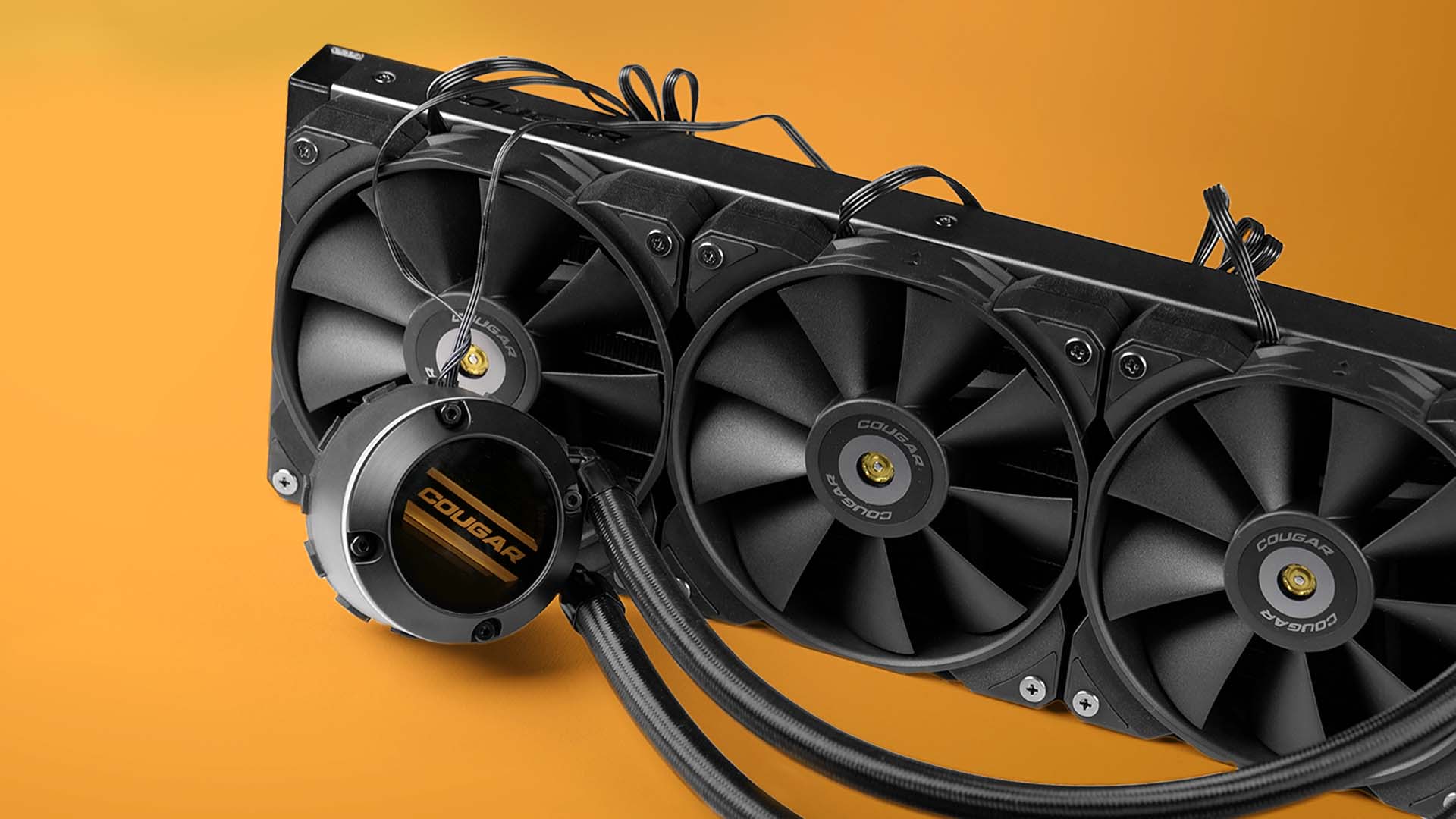
The best description of the Poseidon-Series would be: Industrial.
The matt-black & matt-grey finish of the radiator combined with the cutout in the center of each fan revealing the shaft creates a very industrial look. Additionally, it creates the illusion of the AIO being unnaturally sturdy. This isn't to say that the AIO isn't sturdy, it is, we wouldn't recommend using it as a hammer though.
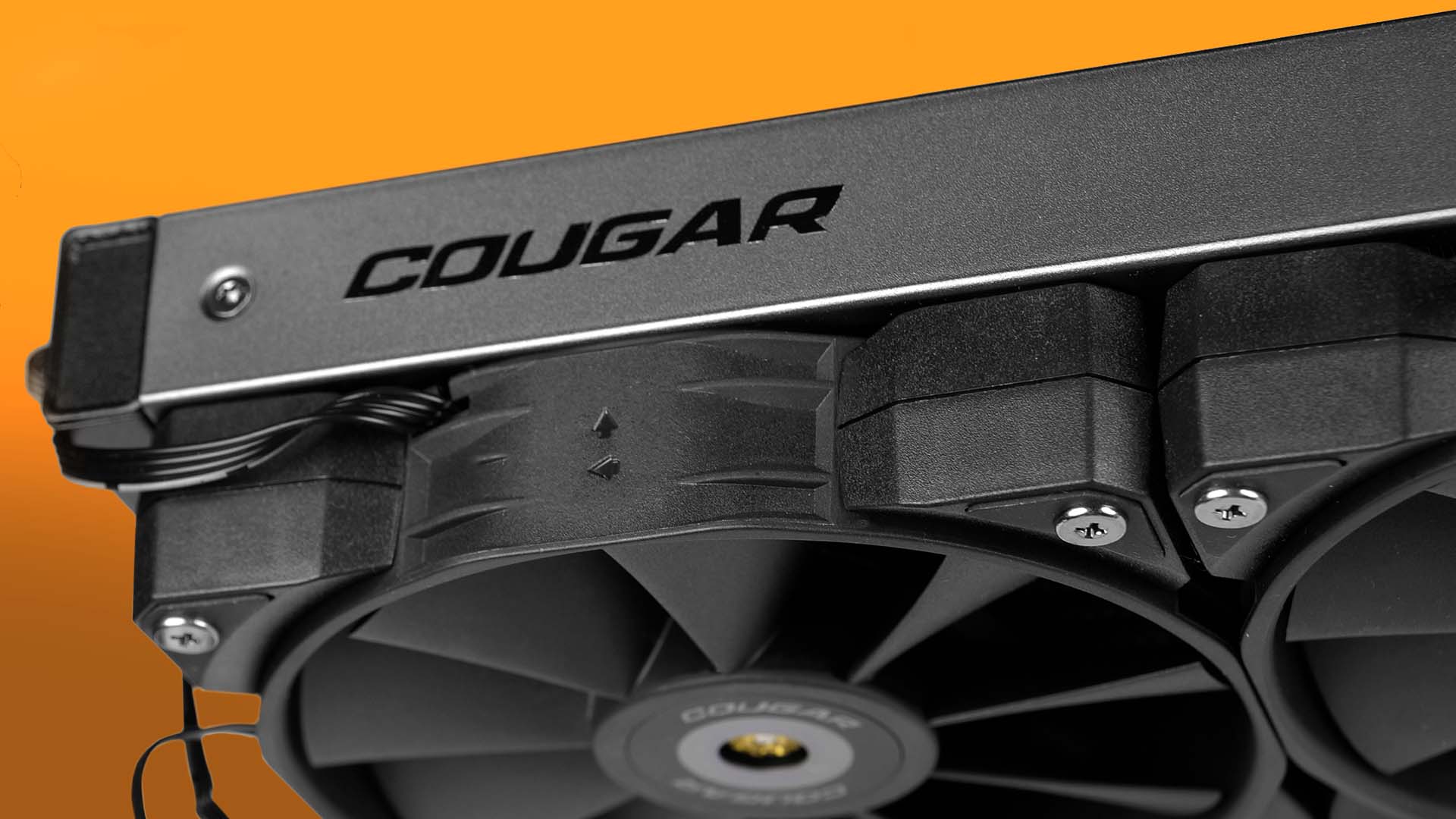
The final touch of the design comes from the water block cap. Featuring an ARGB ring around it, two infinity mirrors in the center, and a glowing Cougar logo creates a little light show in the center of the PC.
If the RGB part is something that you enjoy, great, if not, at the very least we can reassure you that the implementation is well executed. The lights are strong without any visible LED spots.
BENCHMARK
We benchmarked the cooler using our new CPU Cooler Benchmark Machine featuring 3 different Workloads at 320, 250, and 120W.
Thanks to the Poseidon GT 360s' superior performance, all three benchmarks were applied.
120W
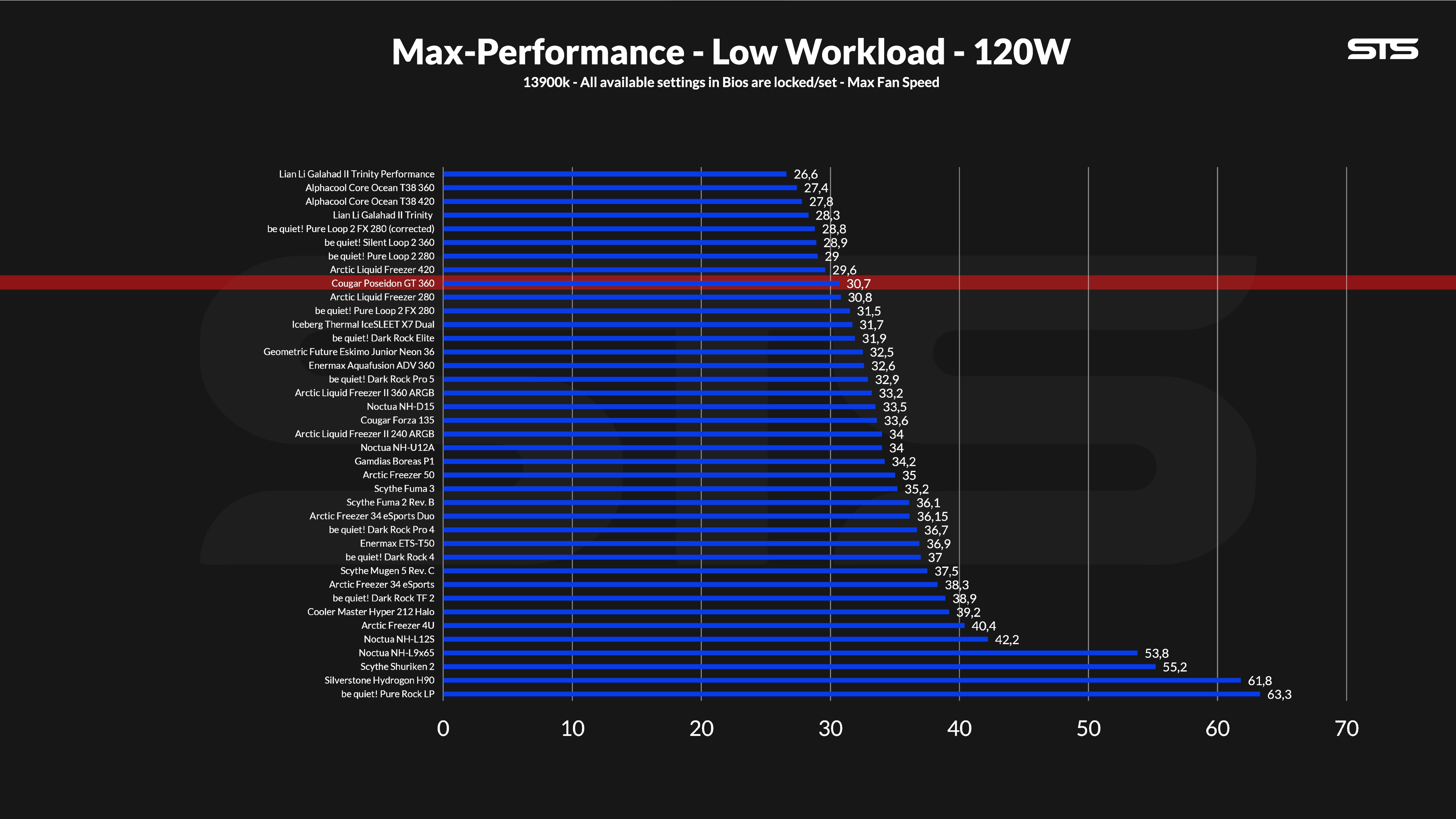
At our "low" workload, the Poseidon GT 360 managed to keep the CPU at 30.7°C above ambient. This puts it roughly in the center of all 360mm AIOs.
By slowly lowering the fan speed in 10% steps we created a noise-to-performance graph.
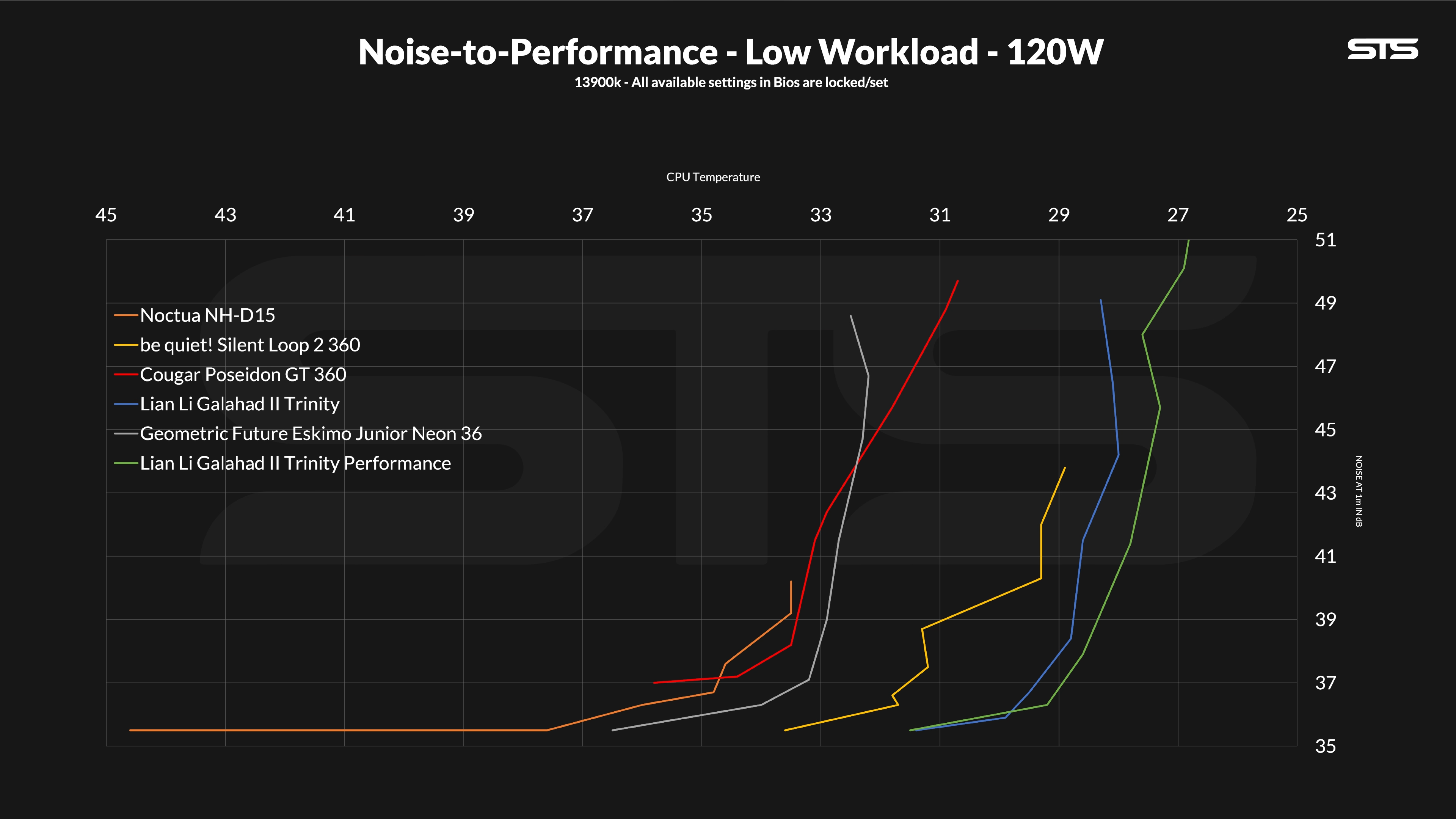
On this, we were able to observe that the fans used on the Poseidon GT are definitely too much for such a low workload. Solely beating the Geometric Future Eskimo Junior Neon 36 at the higher speeds isn't the best relation with noise.
Additionally, we were able to observe that the pump does create a slight whistle louder than our noise floor.
250W
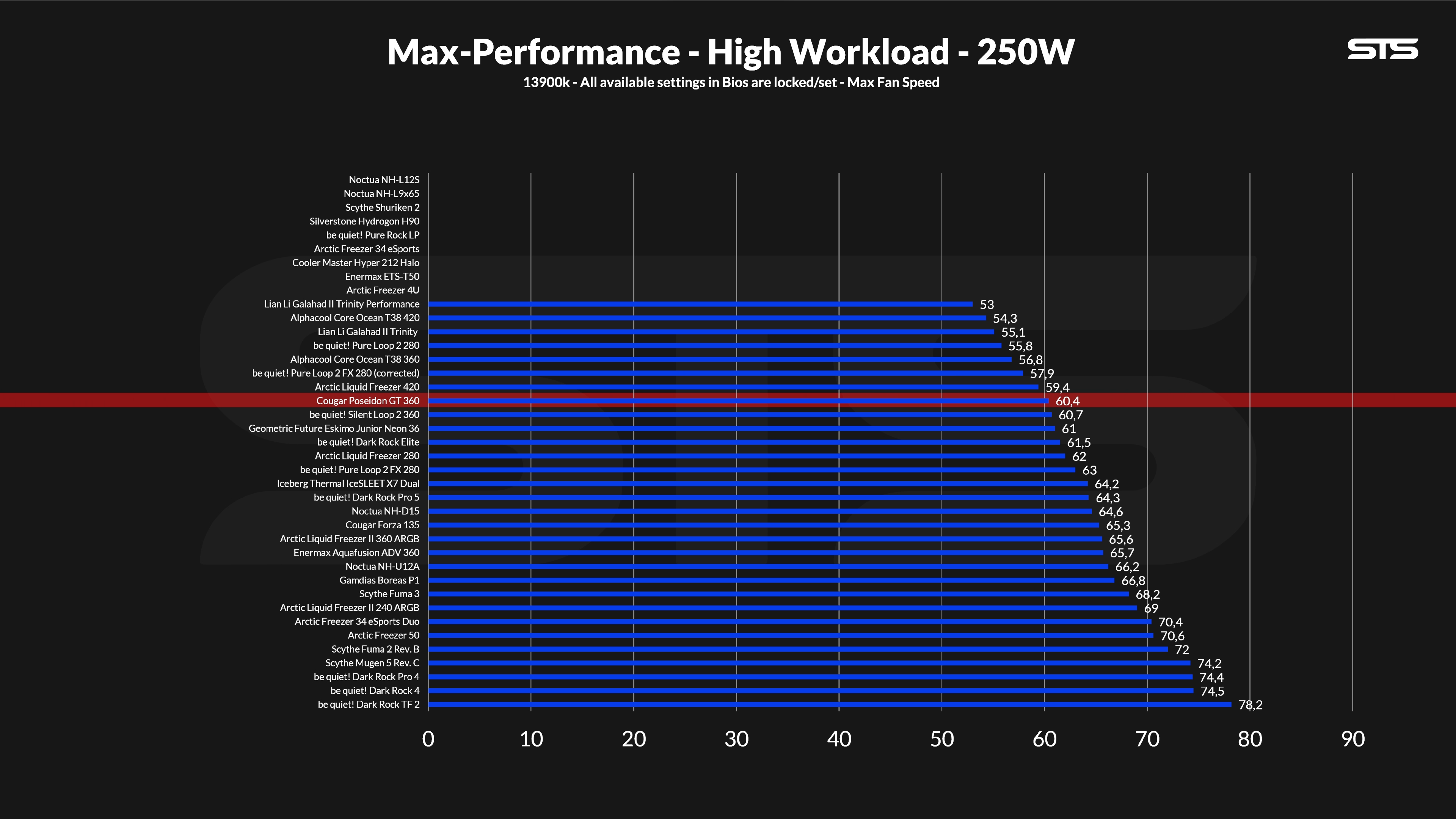
Pushing 250W through the socket allowed the Poseidon to keep the CPU at 60.4°C above ambient. Although it is still at the top of the benchmark list, it remains in the center of 360mm AIOs.
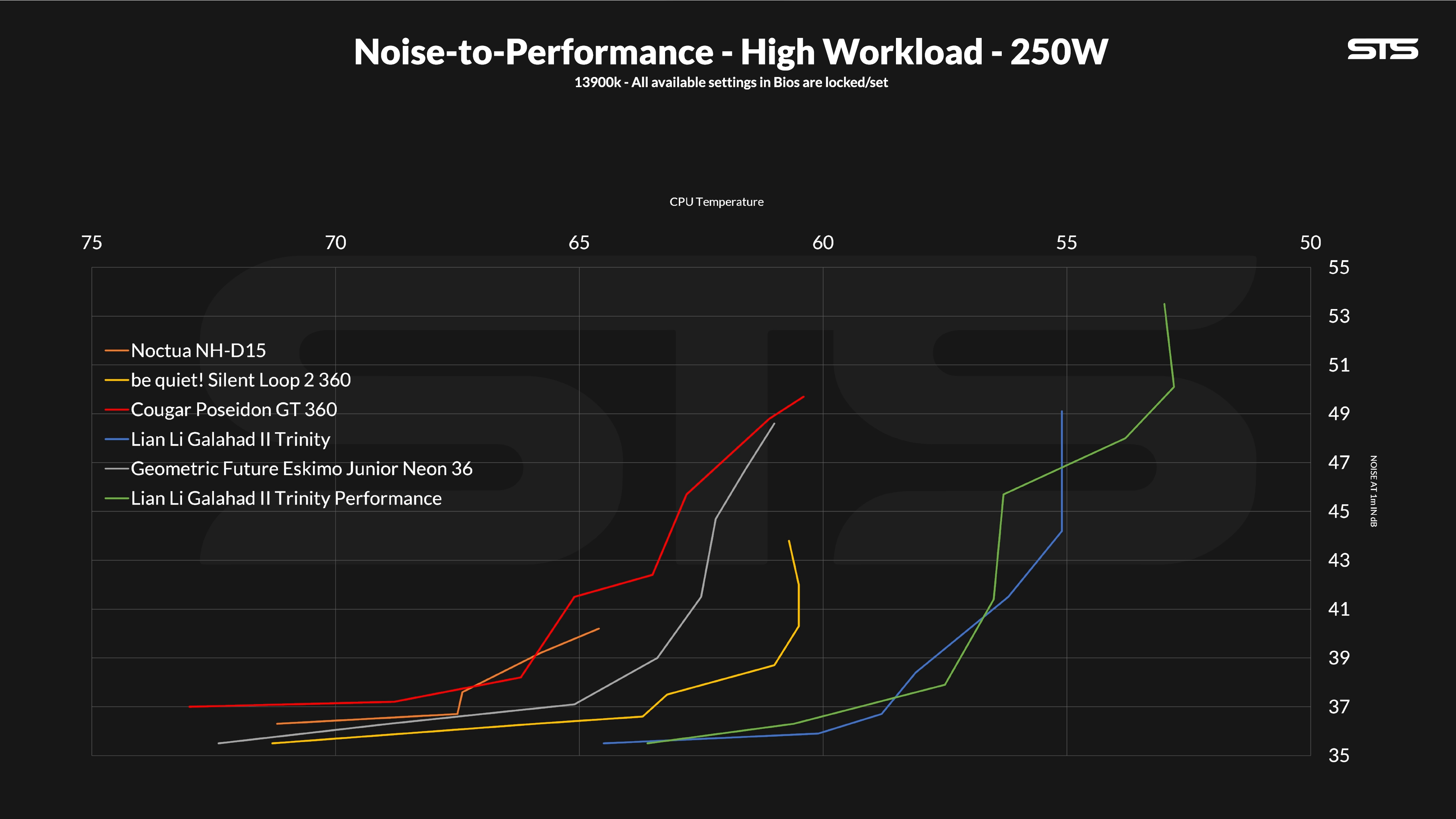
The corresponding noise-to-performance graph doesn't look particularly better either, now never being able to fully outperform the Junior Neon no matter the fan speed.
320W
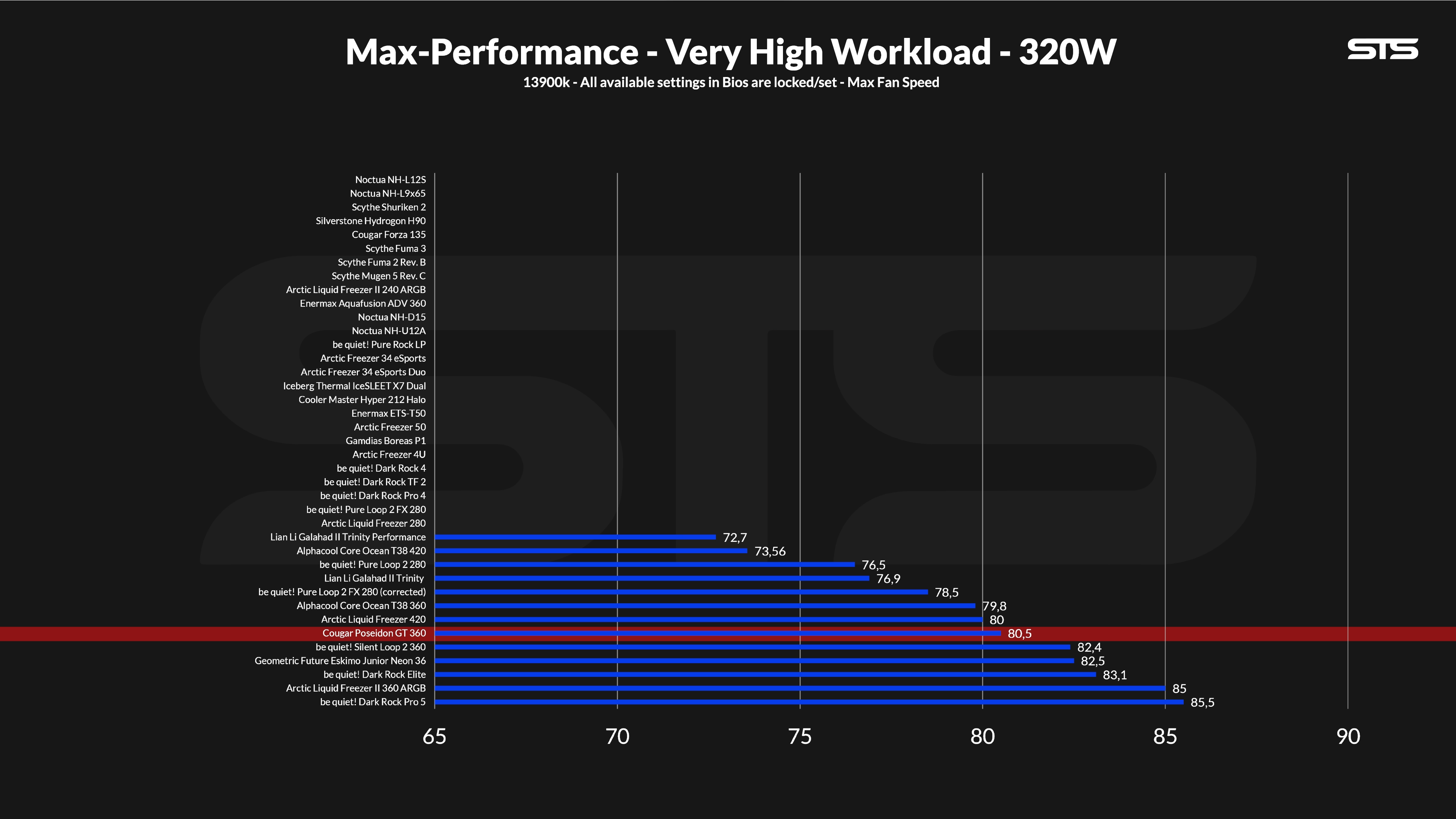
At the highest 320W workload, the Poseidon was finally capable of unleashing its full potential at 80.5°C above ambient.
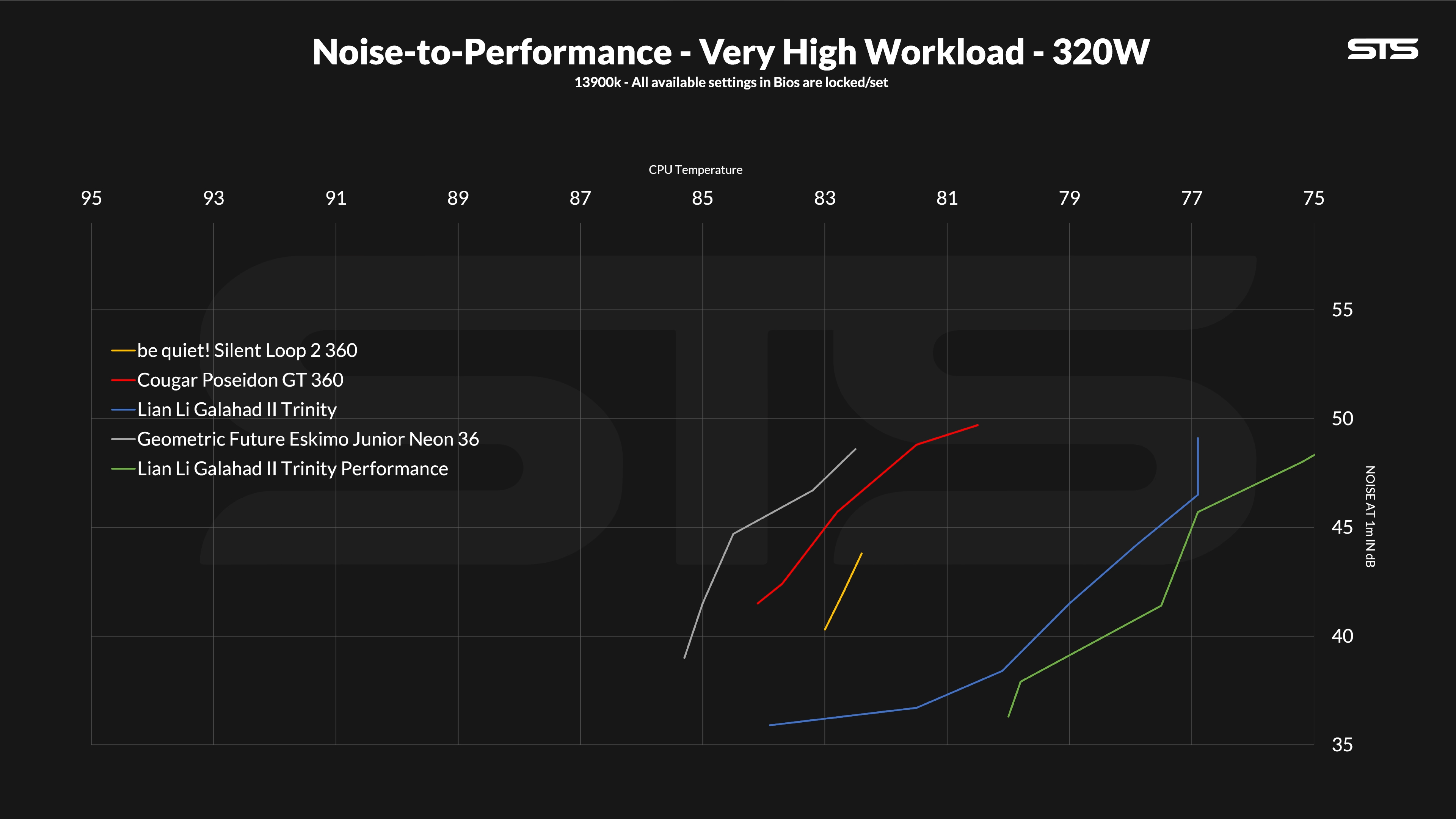
Thanks to the higher workload, the Poseidon was now capable of outperforming the Geometric Future AIO from start to finish and even approaching the performance level of a Silent Loop 2 360.
CONCLUSION
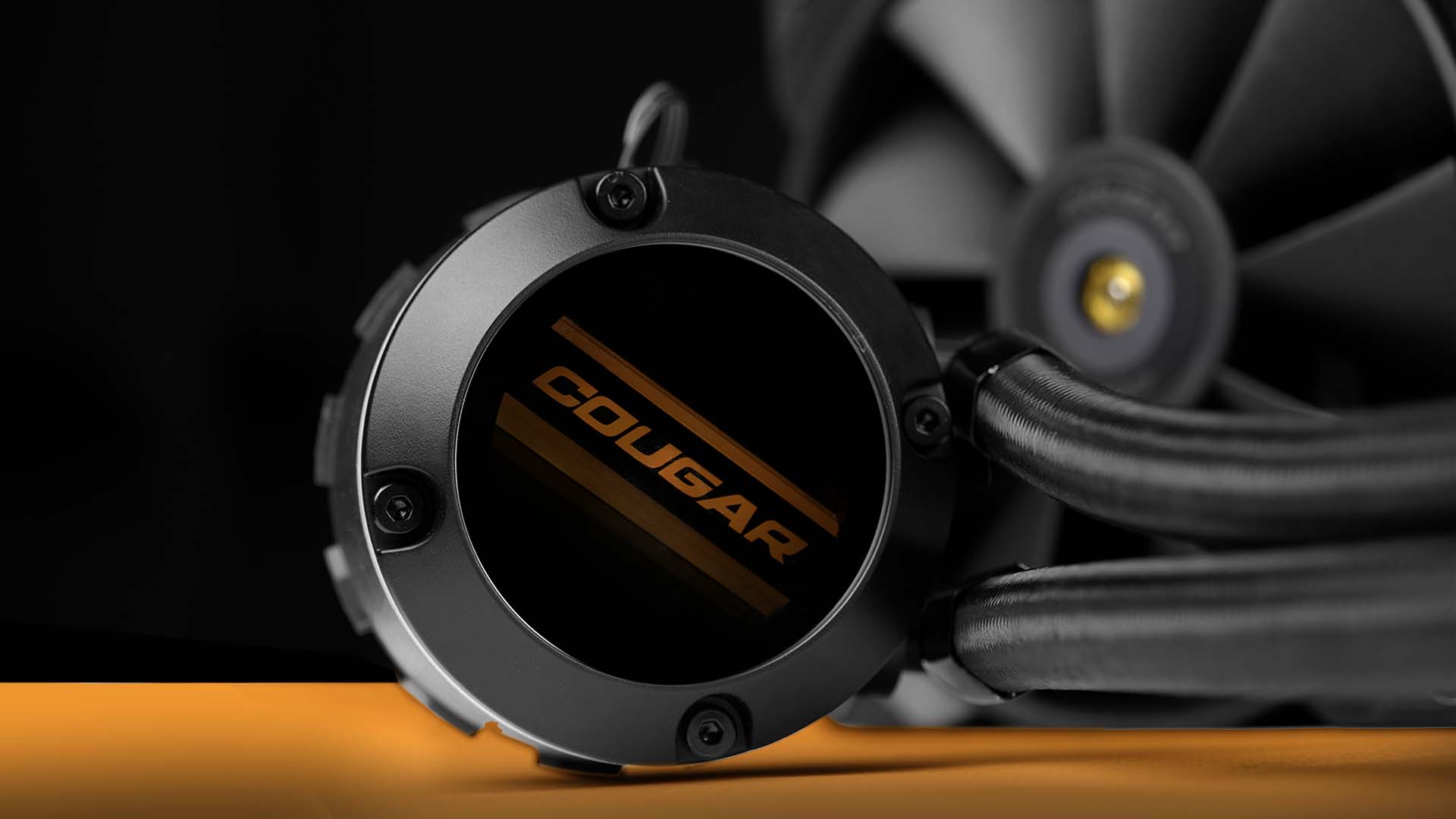
Overpowered.
We believe the Cougar Poseidon GT 360 to be an amazingly performing AIO, however, it seems to be unbalanced.
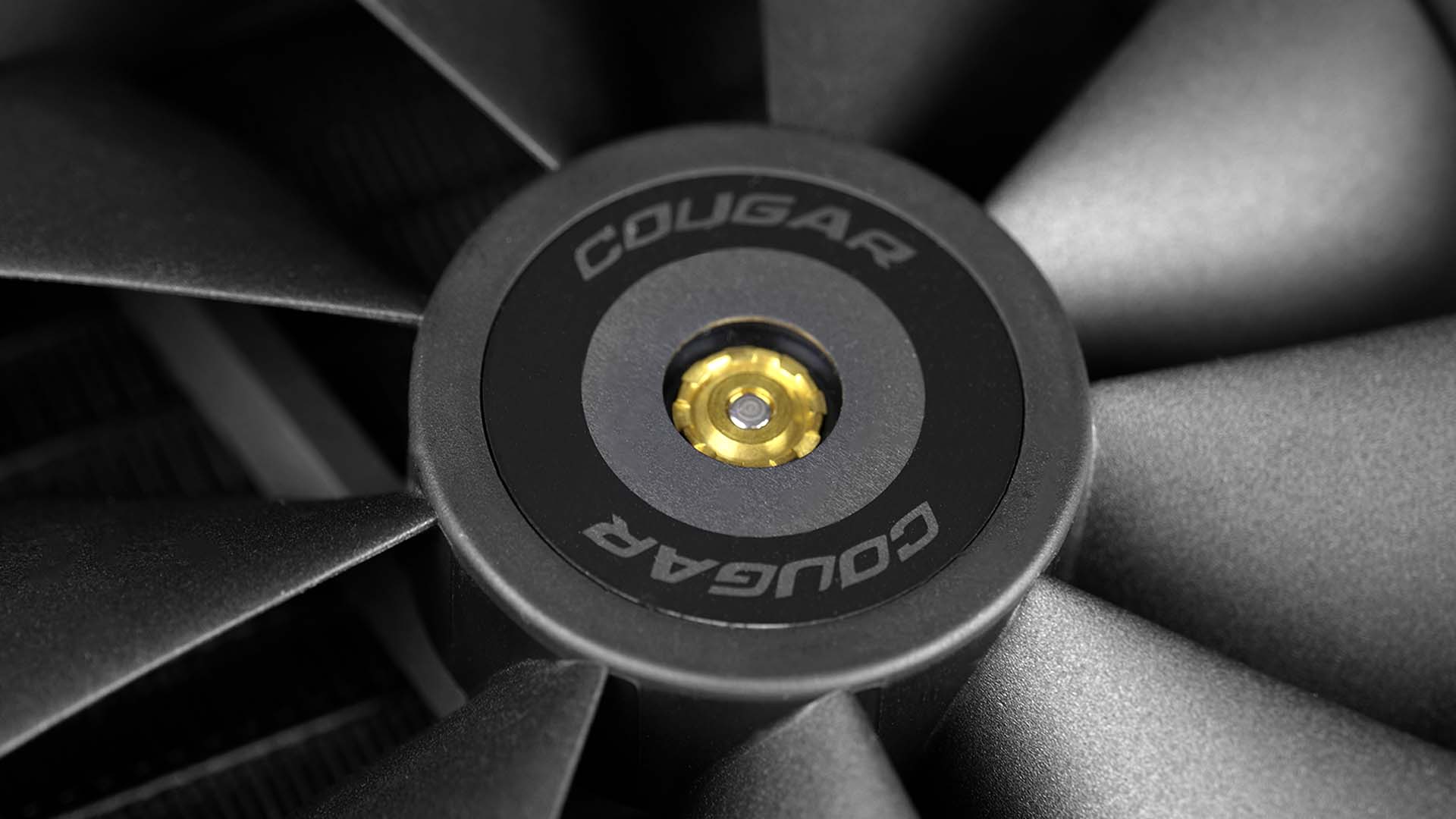
In the lower and mid- workloads, the Poseidon was only capable of delivering mid-level 360mm AIO performance. But at the same time, the fans were slightly overpowered making the overall noise level of the AIO fall behind.
This behavior continued until we unlocked the AIOs full potential at 320W. At this time the fans were doing what they were designed to do while the rest of the AIO brought them the needed heat.
Simultaneously, thanks to the AIO now performing at its peak, the noise-to-performance ratio in relation to other AIOs started to improve as other AIOs struggled to keep up with the heat.

This behavior, unfortunately, makes the perfect use case of the AIO slightly narrow. Instead of overpowering the cooling solution for low- to mid-powered systems, the Poseidon would create a noisy environment.
Therefore, we believe the Cougar Poseidon GT 360 is not only best- but solely to be paired with very high-powered chips. 13900K, 7950X3D. The type of chips that would make any high-end cooler sweat, but where the benefits of the Poseidon outweigh its downsides.

Ignoring the performance, the Poseidon made a very solid impressive. Its matt-black & matt-grey finishes paired with the industrial look of the fans created a design that we truly enjoyed. So much so that we didn't bind the RGB-bomb present on top of the waterblock. However, design is design and you can decide this aspect for yourself.
All in all, we were quite happy with the Poseidon GT 360, and thanks to its superior performance paired with the quite impressive quality, we can only recommend it. However, please keep in mind the high-powered chip recommendation mentioned above.

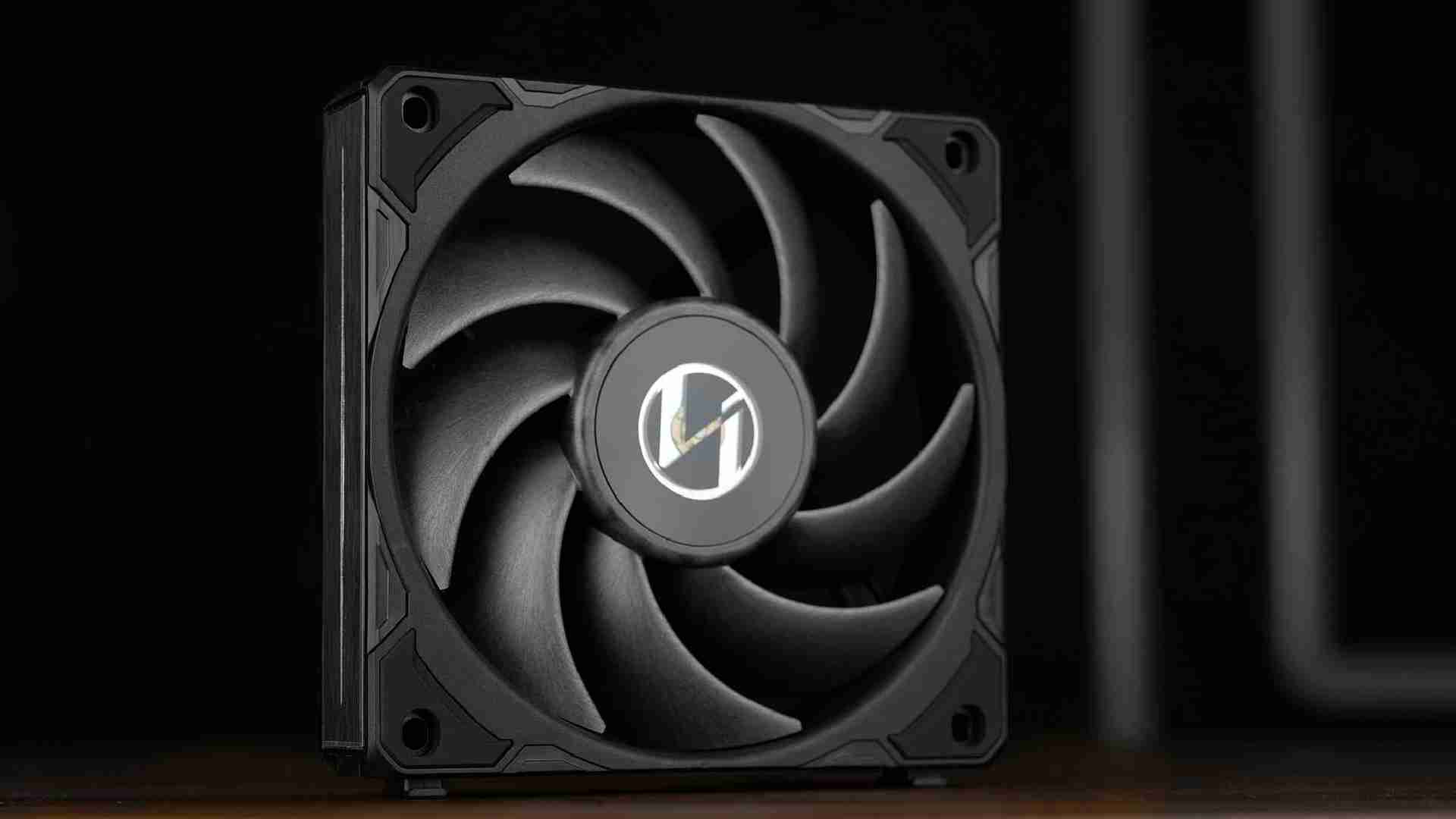
Lian Li Uni P28 Review
Lian Li Uni Fans have been known for many things. Performance being one of them. But now, with the newest Uni P28, Lian Li tr
Read More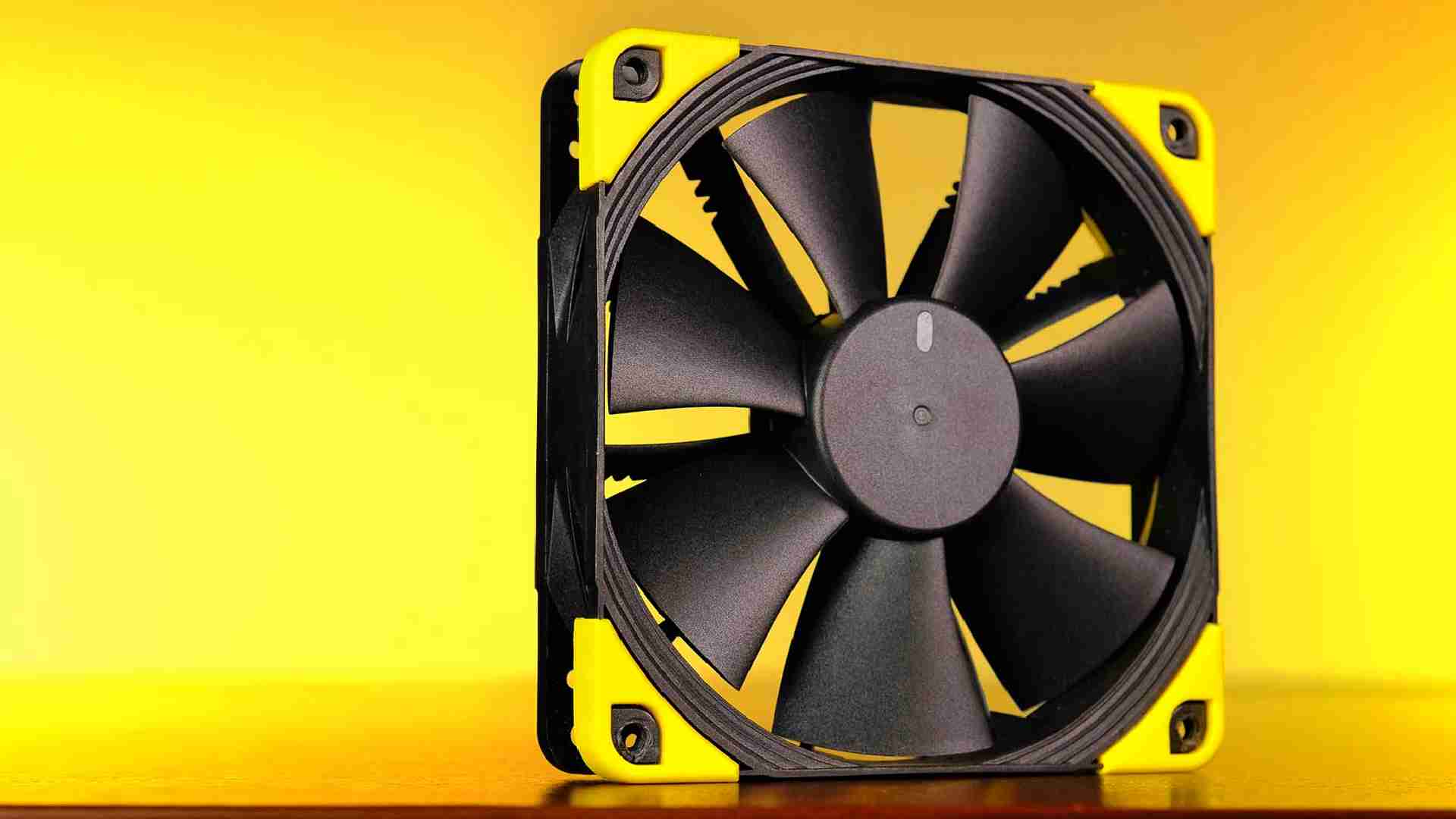
Noctua NF-F12 Review
The Noctua NF-F12 is the static pressure-focused radiator beast out of Noctuas complete lineup. Lets see if its really the ra
Read More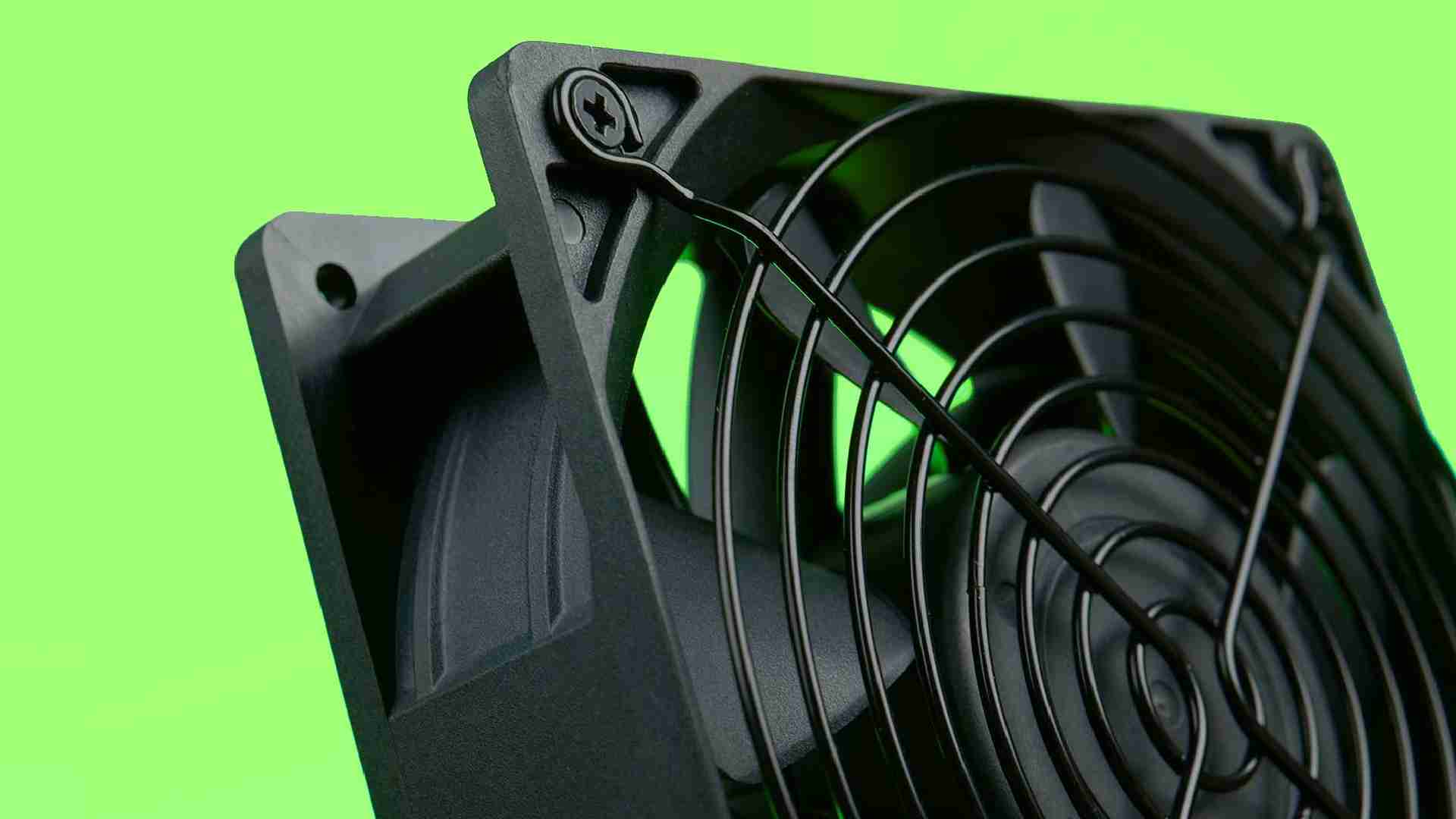
Gelid Gale Extreme Review
If you are looking for the most insane, most extreme, most powerful fan, this may be the perfect candidate for you! Spinning
Read More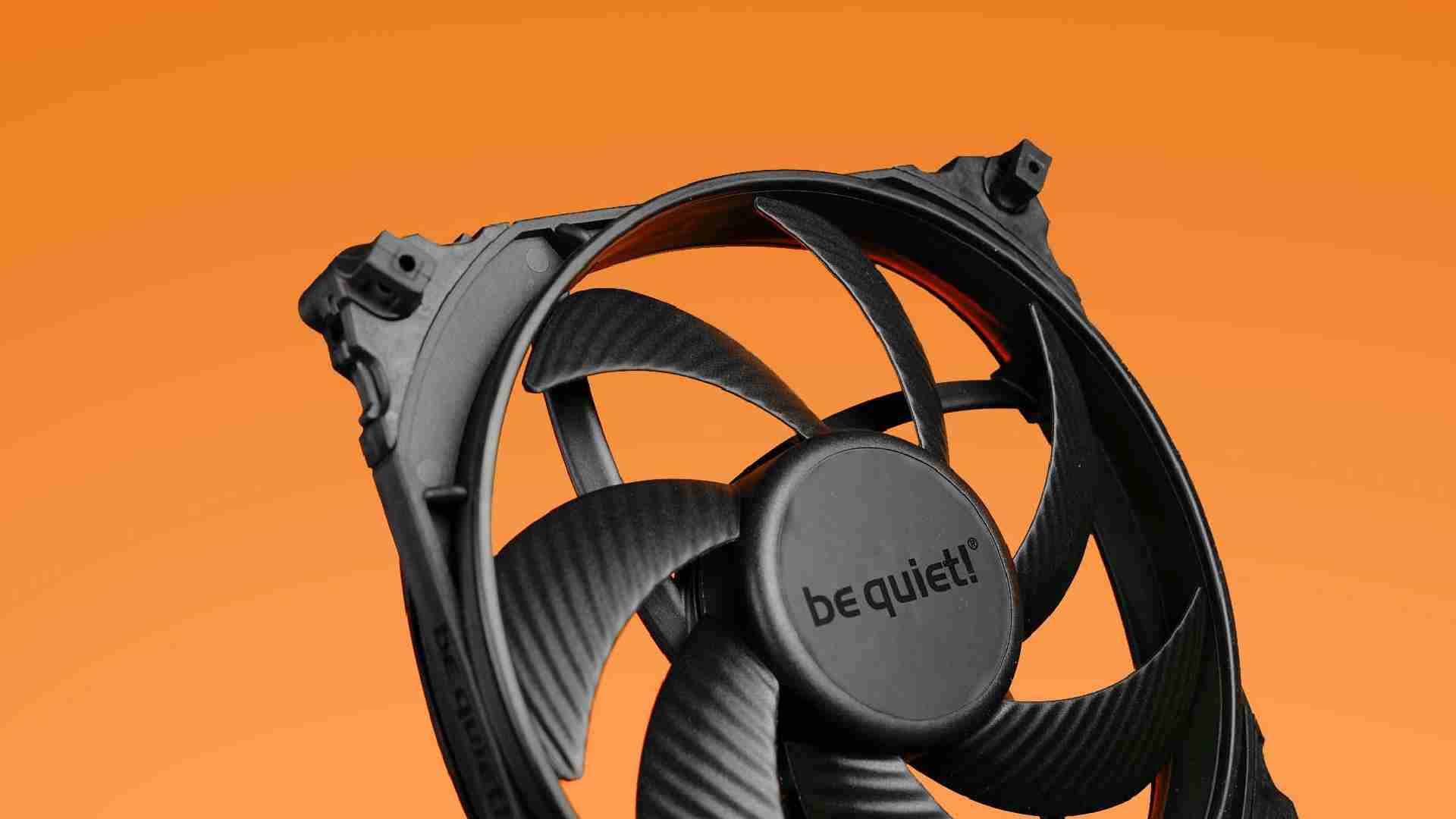
be quiet! Silent Wings 4 140 High-Speed Review
Just like the SW4 High-Speed, there is an upsized version of the perfect Case fan. Meet the Silent Wing 140mm High-Speed, whi
Read More
